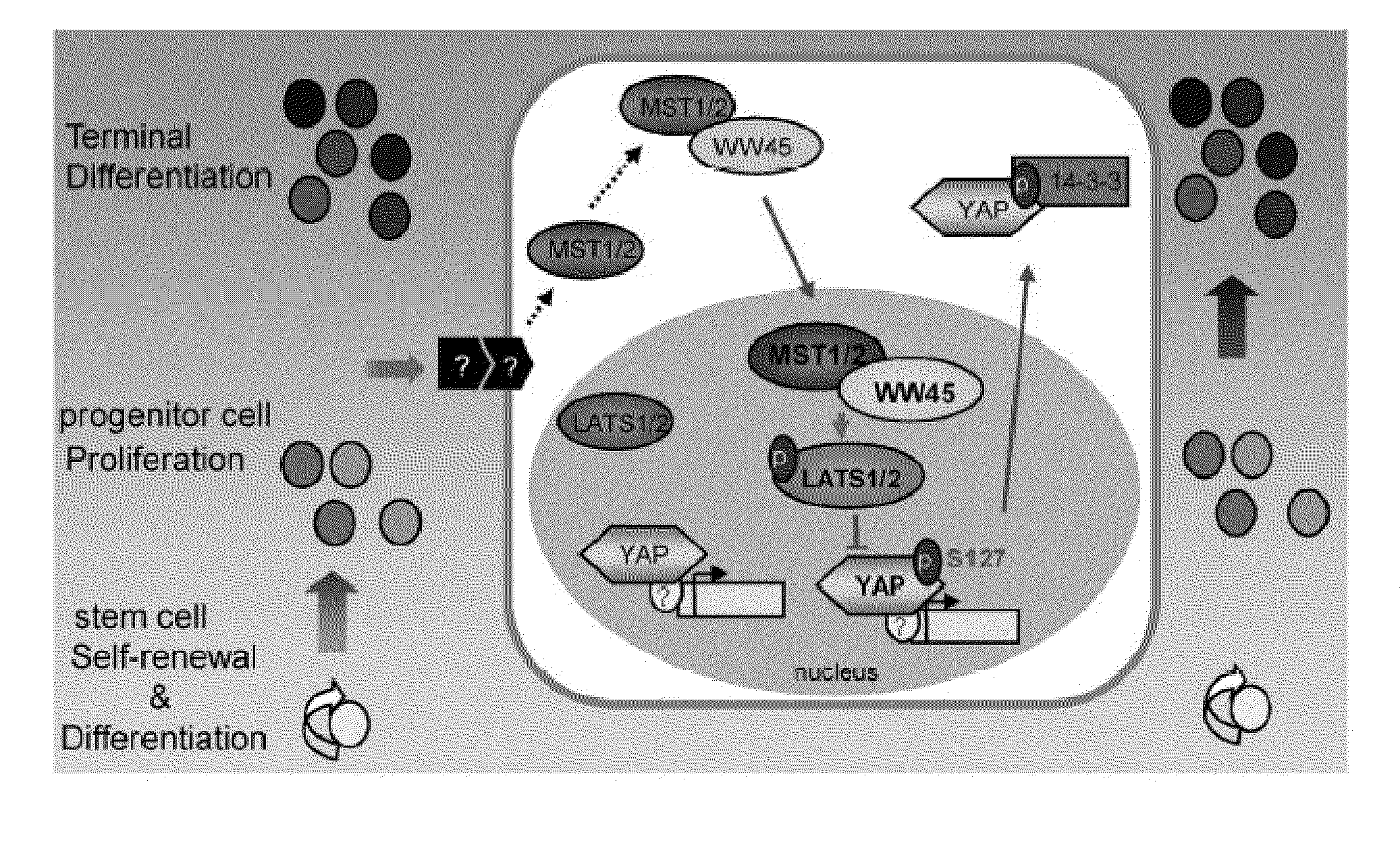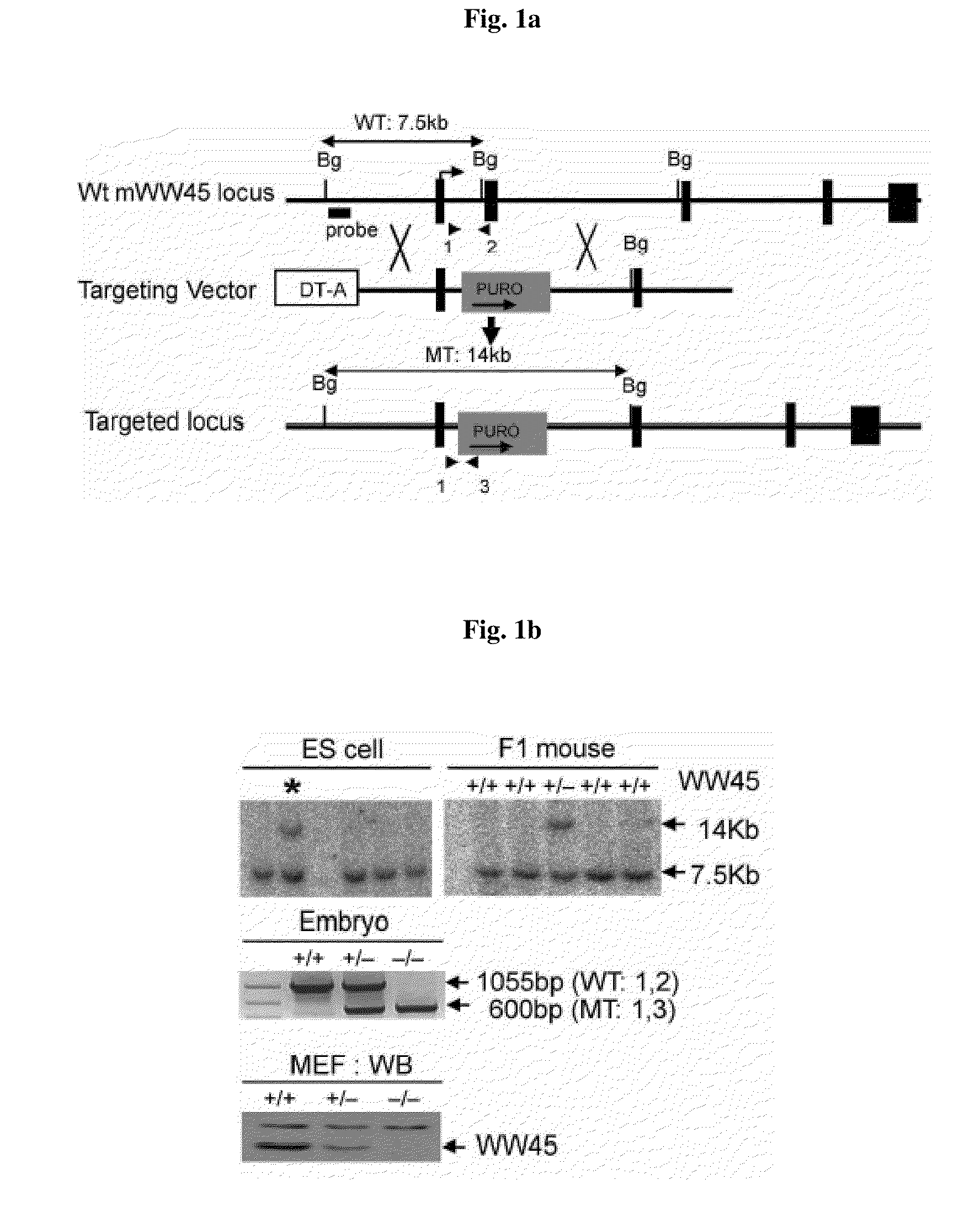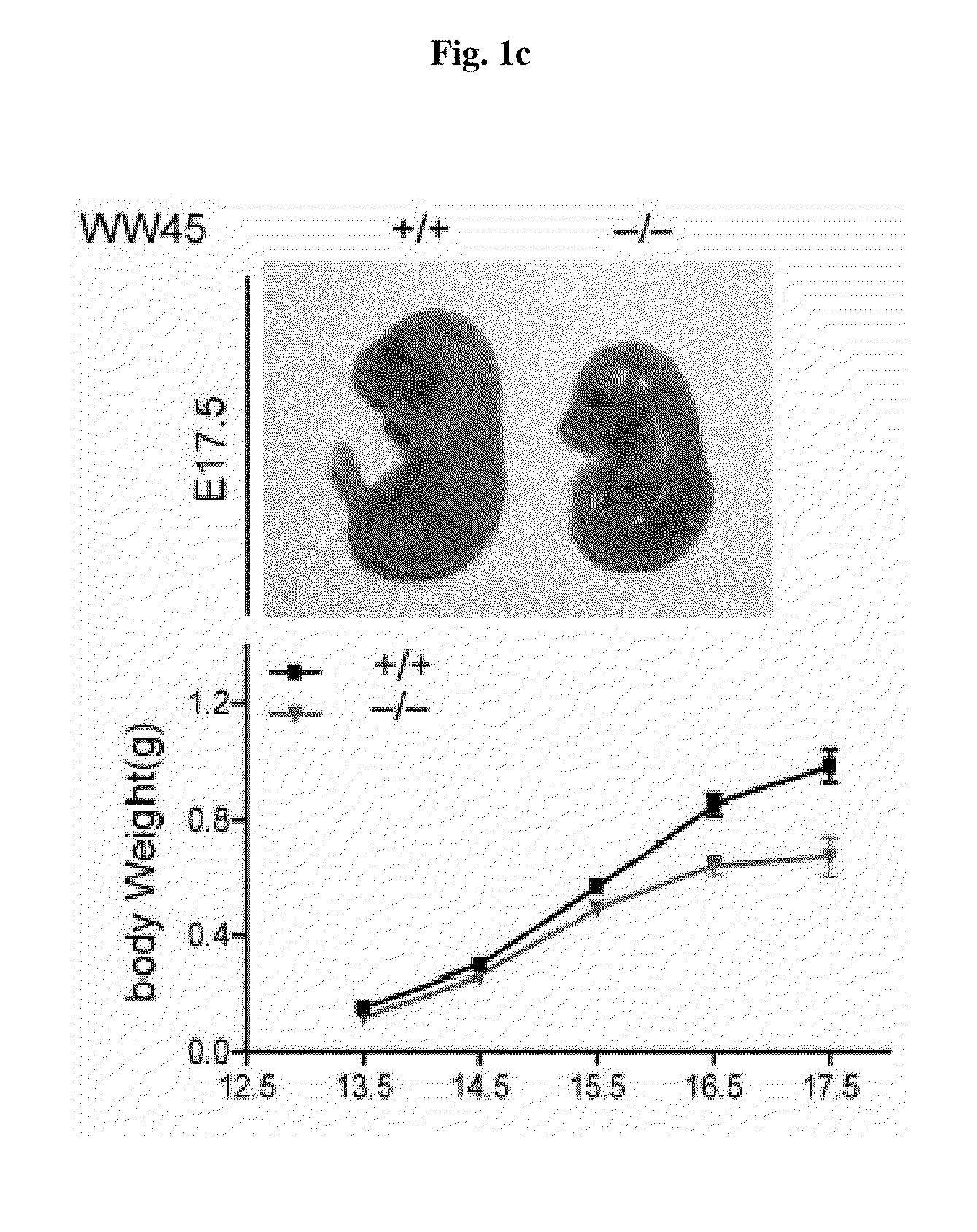Methods of regulating differentiation in mammals
- Summary
- Abstract
- Description
- Claims
- Application Information
AI Technical Summary
Benefits of technology
Problems solved by technology
Method used
Image
Examples
example 1
Generation of WW45 Null Mice
[0115]WW45 gene targeting vector was injected into ES cells by electroporation, and WW45 gene-deficient ES clones were examined by Southern blotting. The WW45 gene-deficient targeting ES clones were injected into blastocyst, to prepare a chimeric mouse.
[0116]More specifically, a WW45− / − mouse was generated using standard ES cell (R1) homologous recombination and blastocyst injection techniques (Lim et al., 1996; Lee et al., 2006). A WW45 targeting vector was prepared by subcloning left arm (obtained from 6338 bp containing exon1 using EcoR I restriction enzyme (New England Biolabs, NEB)) and right arm (obtained from 3443 bp using BamH I restriction enzyme (NEB)) into pGK-Puro vector (obtained from pBluscript II KS(+) vector (Stratagene) as a backbone) using 129SvJ mouse BAC clone (obtained from Korea Research Institute of Bioscience & Biotechnology) (FIG. 1a). More specifically, puromycin resistance gene, which is a positive selection marker, was cloned b...
example 2
Histological Analysis
[0121]The chimeric mouse produced in Example 1 was mated with a normal mouse (purchased from C57BL / 06, Jackson Lab) to produce WW45 hetero mouse where only one copy of WW45 gene is deleted. It was confirmed by PCR that the embryo obtained by mating the resulted WW45 hetero mice is mutants where the WW45 gene is deleted. The resulted embryo of the transgenic animal was deposited to the Korean Collection for Type Cultures (KCTC) at Yuseong-gu, Deajeon, Korea, on Jun. 12, 2008 and allotted receipt number KCTC11343BP.
[0122]The embryos were fixed in 4% paraformaldehyde overnight at 4° C., embedded in paraffin and sectioned to the size of 4 μm. The sections (4 μm) were stained with hematoxylin and eosin (H&E) or subjected to immunohistochemical analysis. Immunohistochemical analysis was performed using standard protocols (Koo et al., 2007) with antibodies against PECAM-1(BD), laminin (Abcam), BrdU (Sigma), E-cadherin (BD), β-catenin (BD), Ki67 (Novocastra), anti-filag...
example 3
Barrier Function Assays
[0123]At E17.5, the embryos were rinsed in phosphate-buffered saline (PBS) and immersed in acidic X-gal mix (100 mM phosphate buffer at pH4.3, 3 mM K3Fe(CN)6, 3 mM K4Fe(CN)6, 2 mM MgCl2, 1 mg / mL X-gal), then incubated for 8 hours at 37° C. in the dark (Hardman et al., 1998).
PUM
| Property | Measurement | Unit |
|---|---|---|
| Length | aaaaa | aaaaa |
| Fraction | aaaaa | aaaaa |
| Volume | aaaaa | aaaaa |
Abstract
Description
Claims
Application Information
 Login to View More
Login to View More - R&D
- Intellectual Property
- Life Sciences
- Materials
- Tech Scout
- Unparalleled Data Quality
- Higher Quality Content
- 60% Fewer Hallucinations
Browse by: Latest US Patents, China's latest patents, Technical Efficacy Thesaurus, Application Domain, Technology Topic, Popular Technical Reports.
© 2025 PatSnap. All rights reserved.Legal|Privacy policy|Modern Slavery Act Transparency Statement|Sitemap|About US| Contact US: help@patsnap.com



